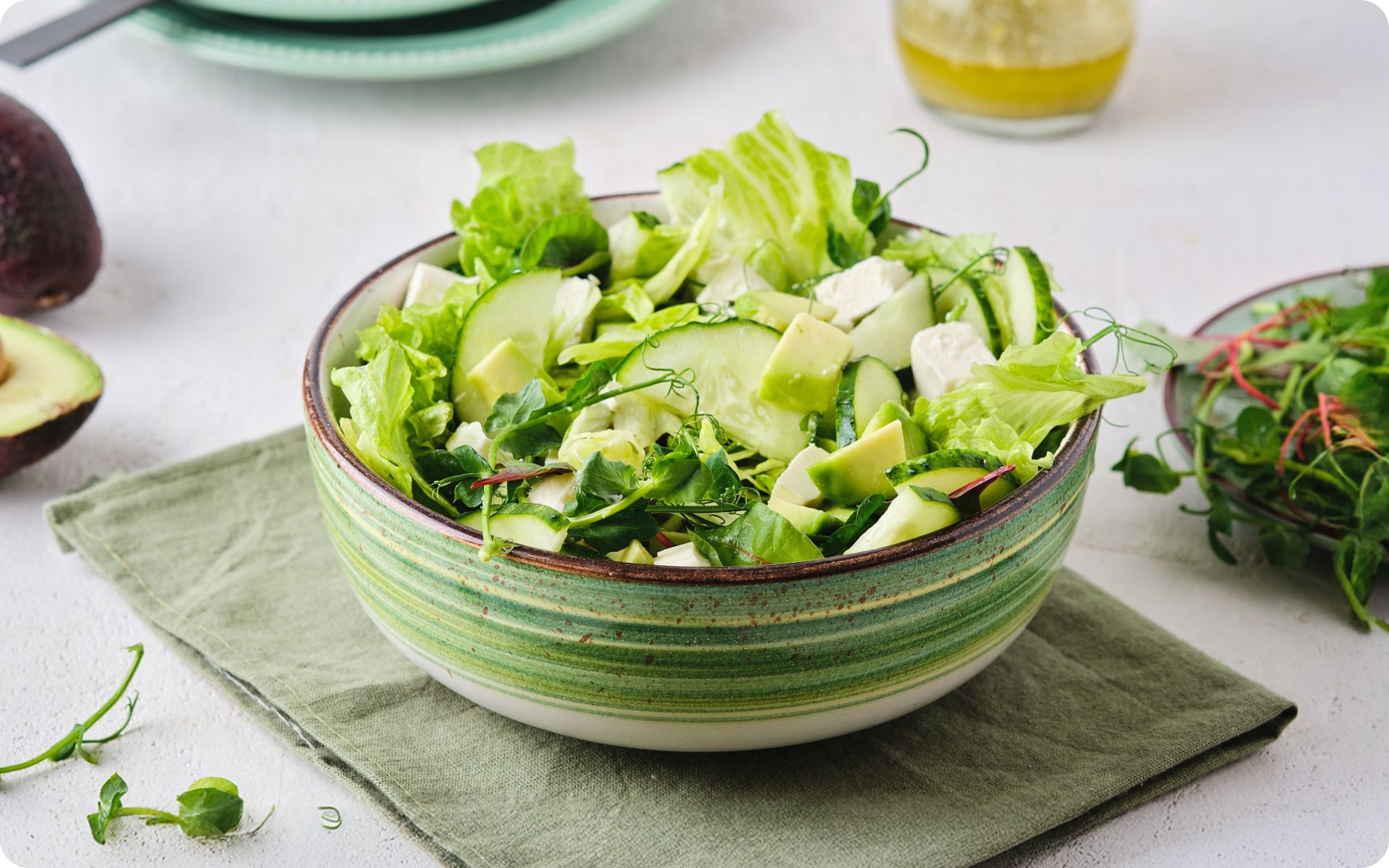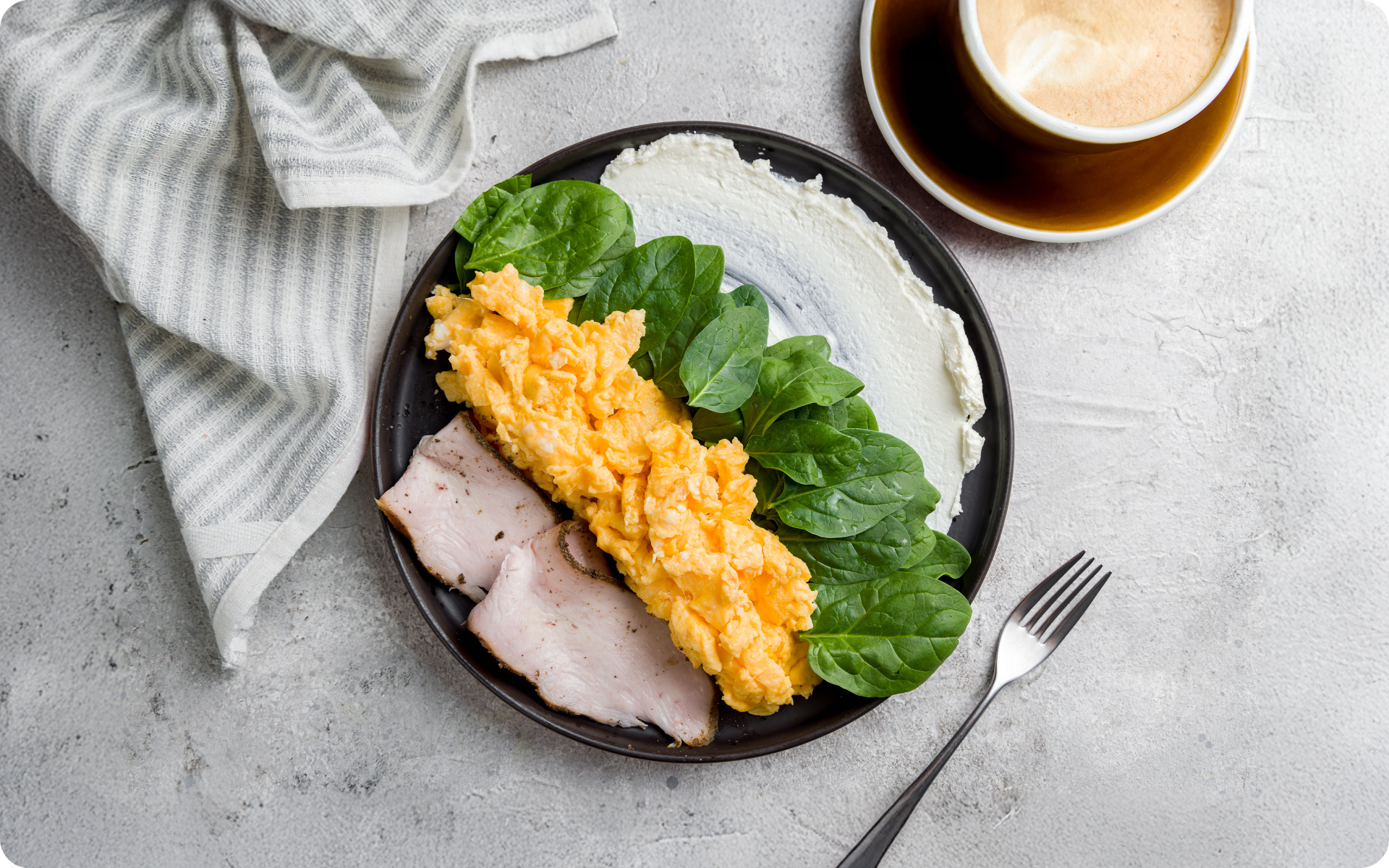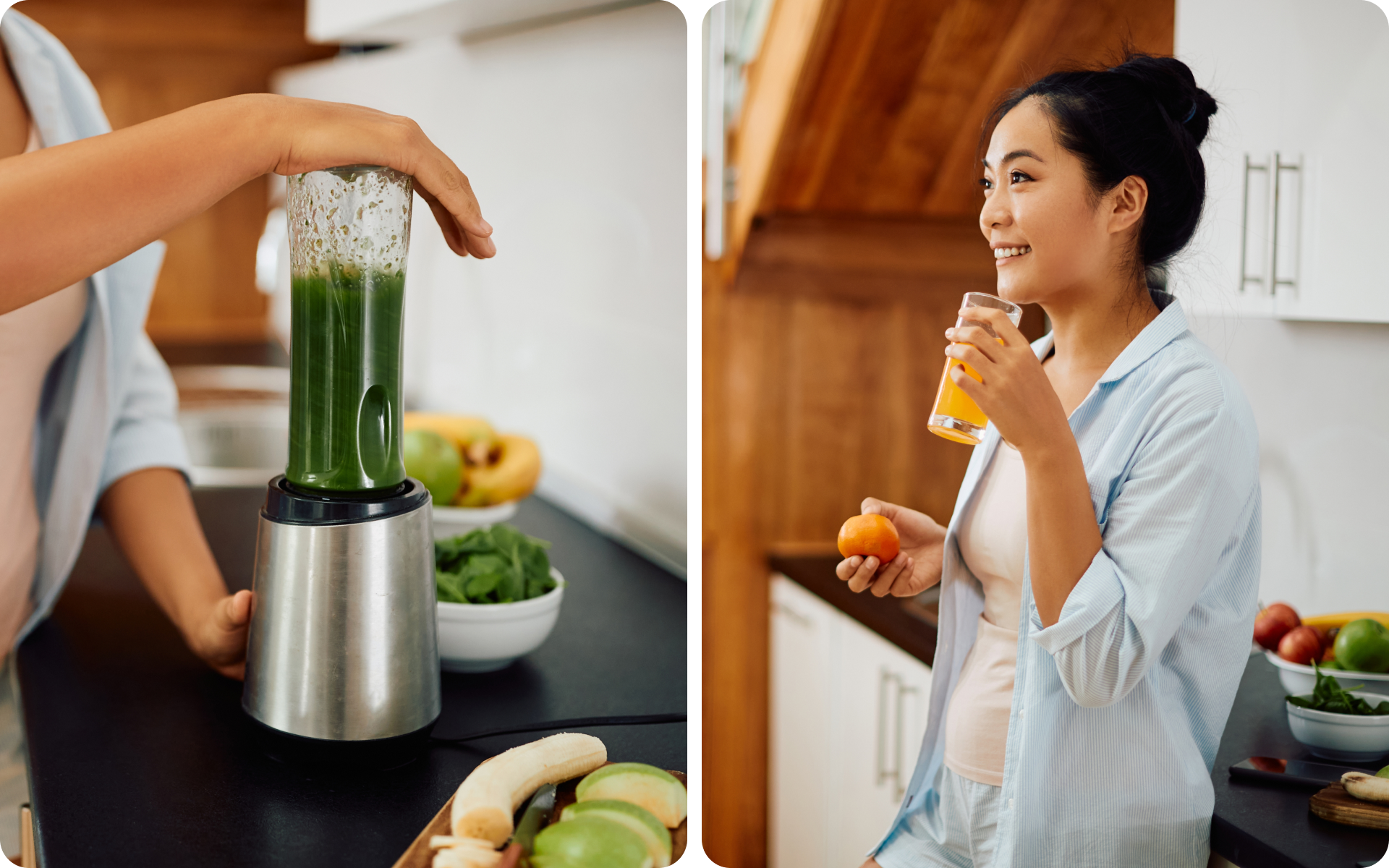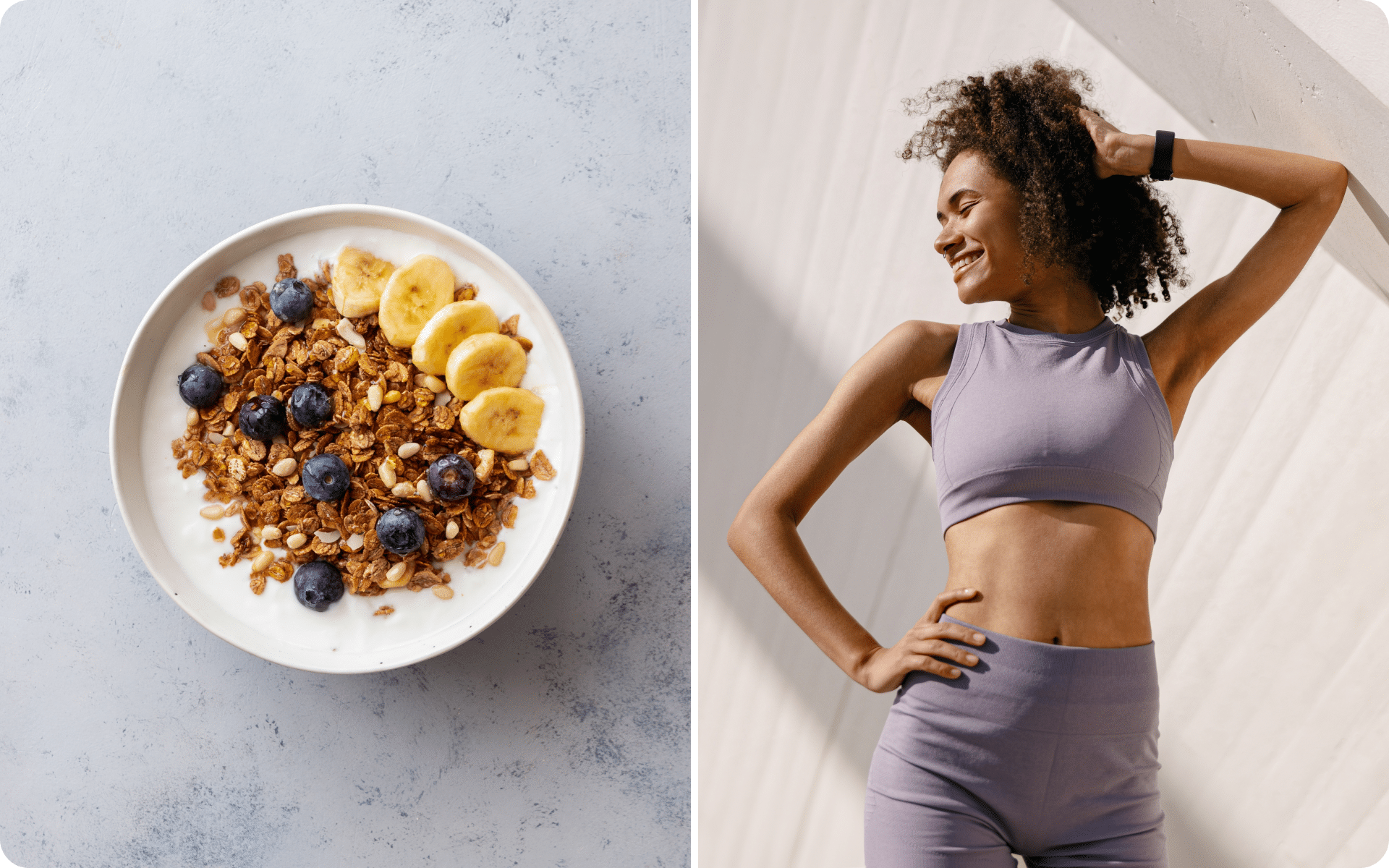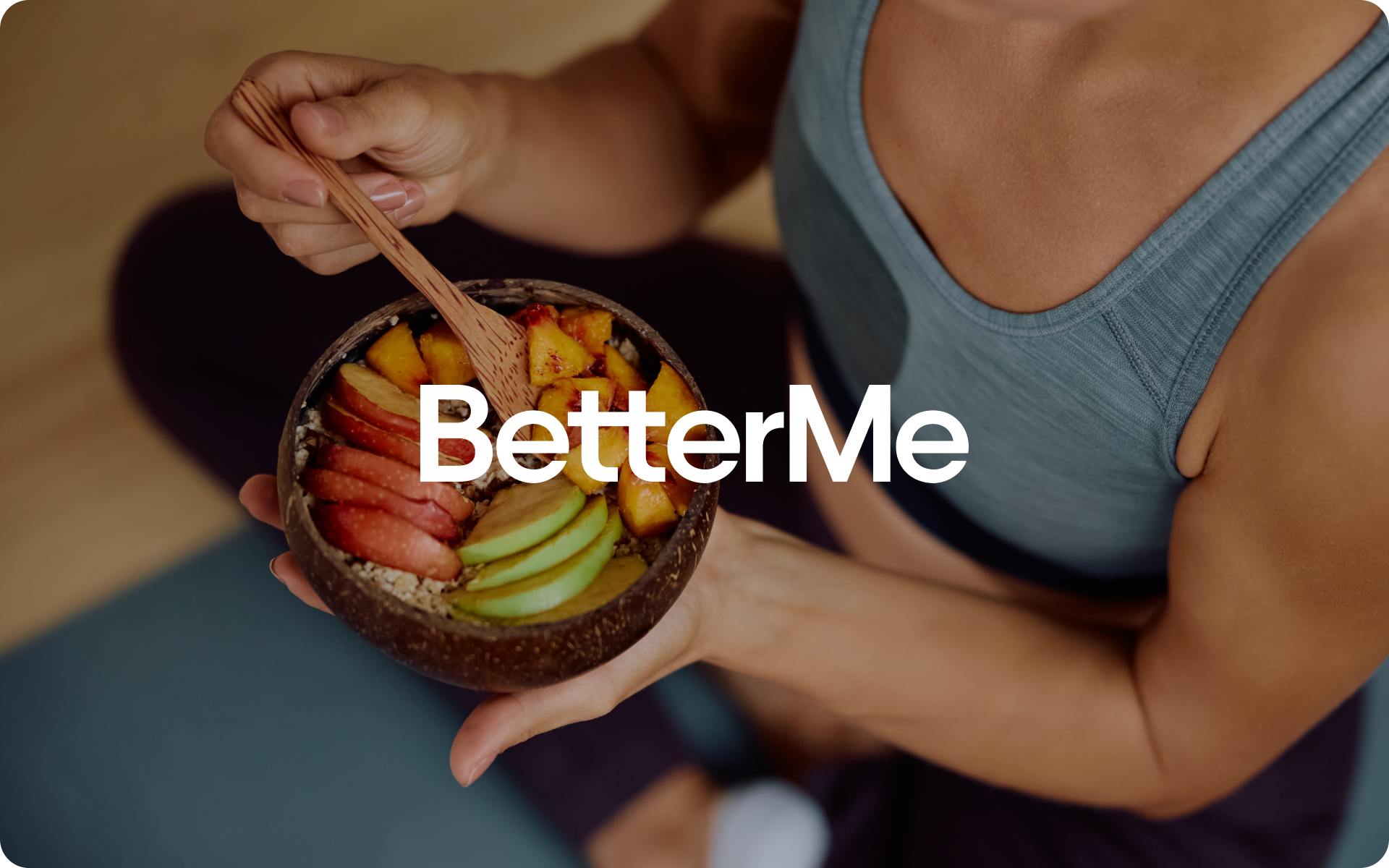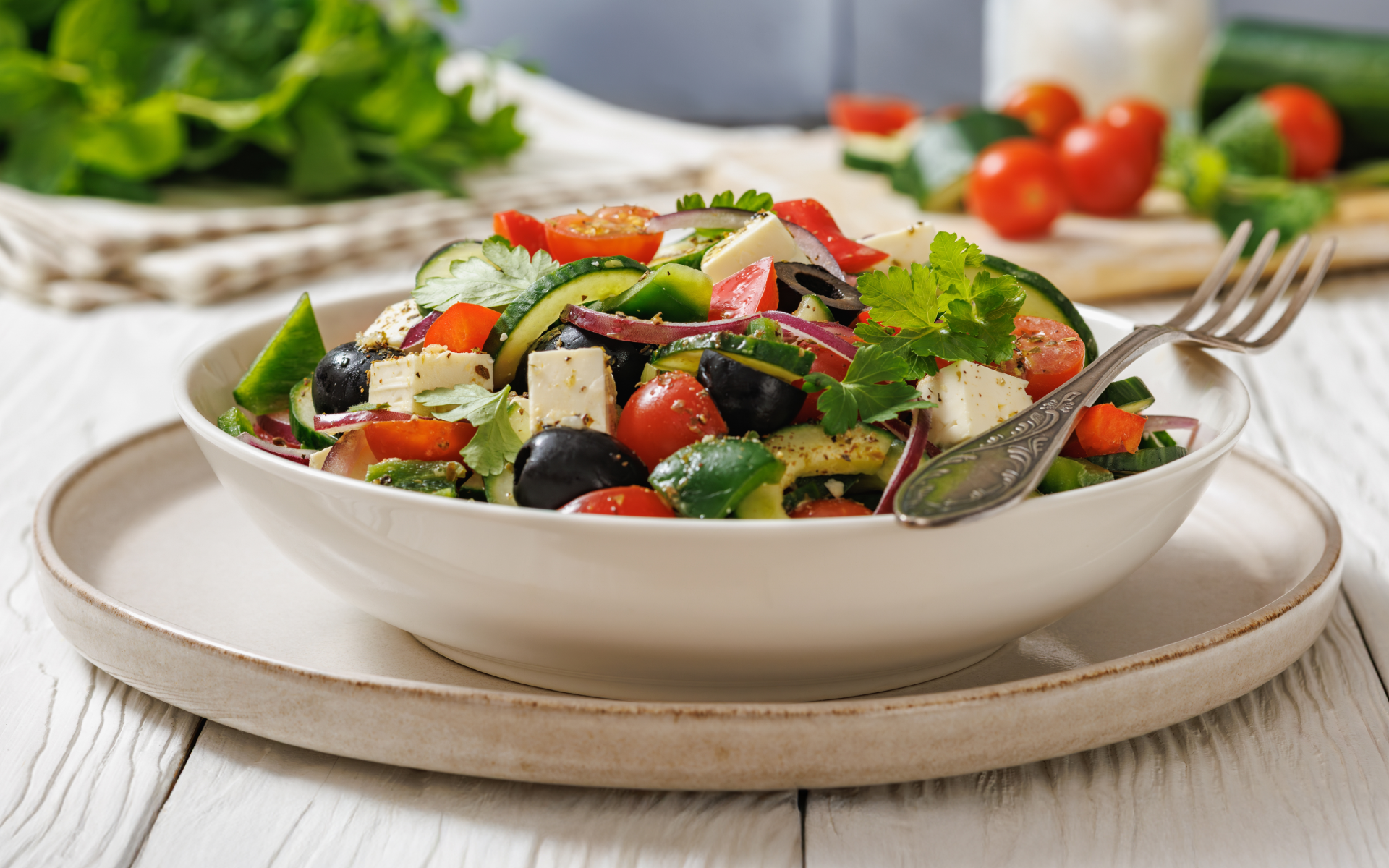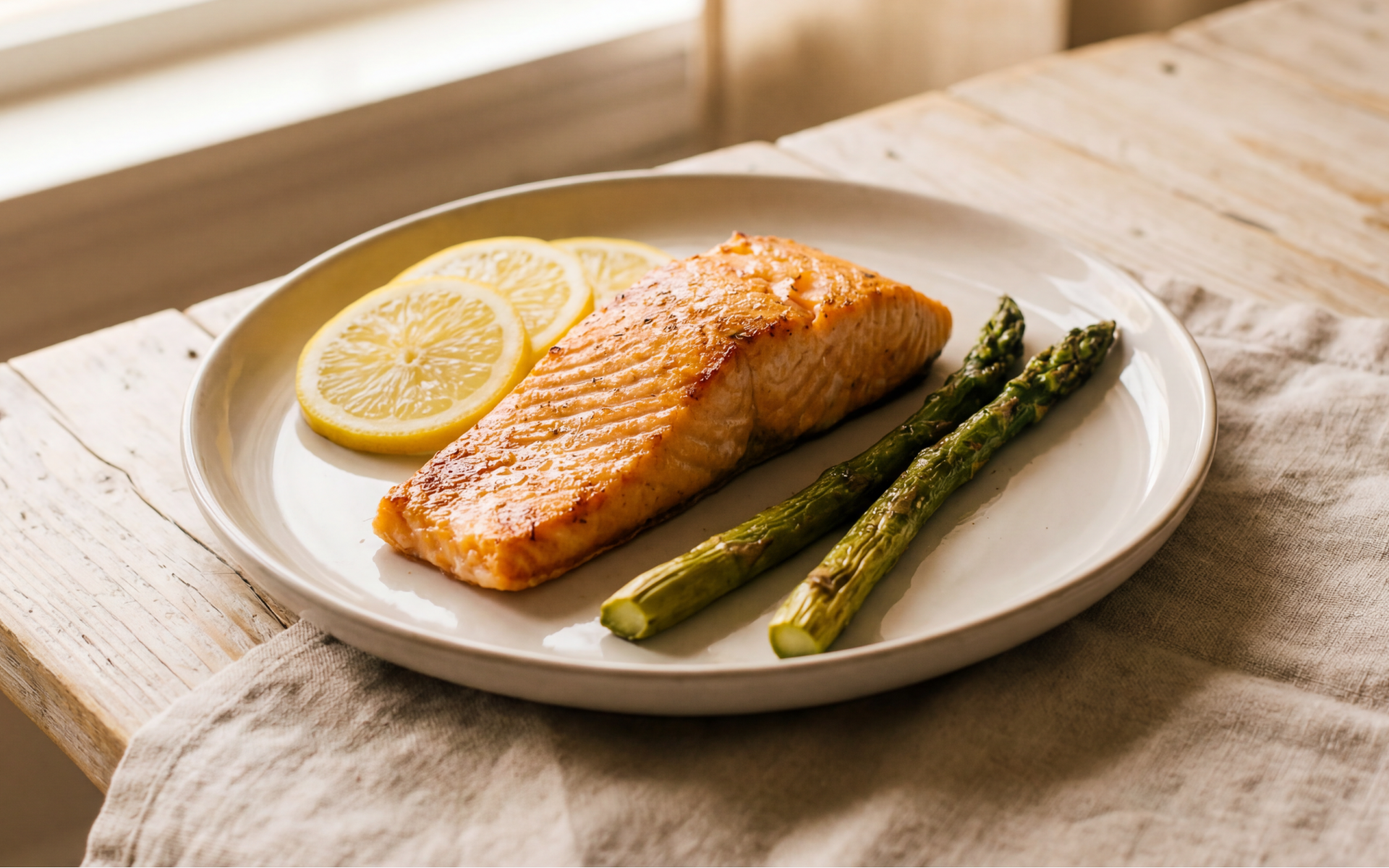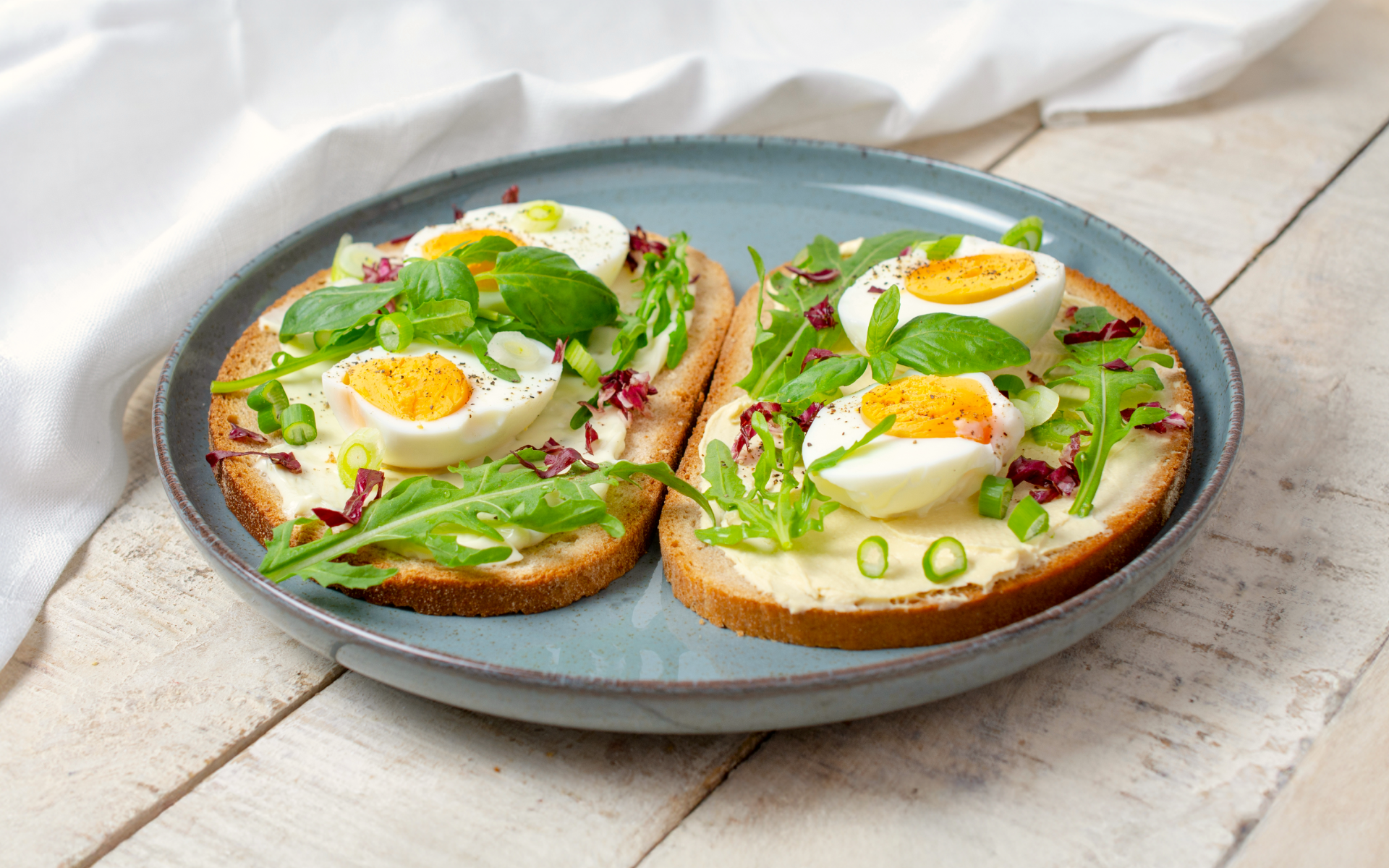Do you struggle with bloating, sugar crashes, and stubborn weight, even when you’re eating “right”? The low-carb, no-sugar diet is a multi-purpose approach for losing weight and managing blood sugar levels.
It may initially seem restrictive and it’s true that it isn’t appropriate for everyone, but with some planning and adjustment, you can enjoy delicious meals every single day. Here’s how to make a sustainable meal plan.
Does Quitting Sugar Include Carbs?
Quitting sugar doesn’t mean quitting all carbs. Carbohydrates come in different forms: simple carbs (sugars) and complex carbs (starches and fiber). When someone says they want to quit sugar, what they usually mean is they want to reduce added sugars.
Added sugars provide calories but few other nutritional benefits. They are also hyperpalatable and not very filling, which makes them easy to overeat. Over time, this can contribute to various health problems, such as obesity, fatty liver disease, diabetes, and heart problems. People who want to quit sugar often limit simple carbs or added sugar, such as white pasta, white bread, and white rice, in addition to sugary drinks and sweets (1).
However, when people start a low-carb, no-sugar diet, they usually continue to eat whole, minimally processed complex carbohydrates that may contain small amounts of natural sugars, such as fruits and whole grains.
Complex carbohydrates play a key role in the human body. The more fiber the food contains, the slower the energy release, which means that you’re less likely to experience blood sugar spikes and can feel fuller for longer (2). Pairing carbs with protein and healthy fats also helps slow down digestion in a similar way, with the same benefits.
If you wish to free yourself from all the extra pounds that have been weighing you down for way too long, start using the BetterMe: Health Coaching app and overhaul your entire life!
Can I Lose Weight by Not Eating Carbs and Sugar?
Yes, you can lose weight on a low-carb, no-sugar diet. Some people experience considerable weight loss accompanied by reduced bloating, fewer cravings, and stable energy. However, low-carb diets may not be right for everyone due to individual health history, goals, and preferences. Losing weight requires reducing your calorie intake, and time, so the best results come from flexible, sustainable, and personalized meal plans you can stick to.
Here’s what research has to say:
- Some studies have found that low-carb diets can produce more rapid initial weight loss than other types of diets. At first, most of the weight you lose isn’t fat, it’s water, but low-carb diets can produce some fat loss over 6-12 months. These diets may also improve long-term blood sugar control and metabolic markers, such as blood pressure, inflammation, and cholesterol, but these improvements may be a result of weight loss and not necessarily the specific diet (3).
- A 2020 meta-analysis compared the effects of low-carb and low-fat diets. Based on results from 6,499 adults, low-carb diets on average led to greater weight loss, higher HDL (good) cholesterol levels, and lower triglycerides (4). However, the low-fat diets on average led to lower LDL (bad) and total cholesterol levels.
- A 2021 pilot study found that a low-carb diet helped participants lose more weight and body fat in just three weeks compared to only exercising. Both interventions led to visceral and subcutaneous fat loss and decreased triglycerides. The low-carb diet improved markers of glucose homeostasis but increased LDL cholesterol, while exercise decreased LDL cholesterol(5).
- A 2024 review indicates that a low-carb diet could be more beneficial for cutting excess pounds than a low-fat diet in adolescents with obesity and overweight. Researchers concluded that it may serve as an efficient tool for maintaining a healthy weight. However, more research is required on its long-term impact (6).
Read More: Is the No-Carb, No-Sugar Diet Plan a Healthy Choice?
What Happens After 2 Weeks of Low Carbs and No Sugar?
Around 3 to 5 days after you cut back on carbs and sugar, your body may experience a “metabolic switch”. If you reduce your carb intake to an extremely low level, your body will need to switch its primary energy source from carbohydrates to fat, which induces ketosis.
Here’s how it works: when you eat carbs, your body uses them for energy and stores any excess as glycogen in your muscles and liver. Glycogen is stored with water associated with it.
For every 1 gram of stored glycogen, your body stores about 3 grams of water. If you store an additional 400 grams of glycogen due to glycogen loading, you would gain approximately 3.5 lb (1.6 kg) of weight.
So, when you significantly reduce carbs for 2 weeks, your body quickly uses up the stored glycogen and releases the extra water. This can make you look slimmer as it’s mostly water leaving your body.
However, you need a sustainable low-carb diet food list to restore your electrolyte balance. When there isn’t enough glycogen, the body turns to protein and fat to burn energy to function, which leads to ketosis.
If you don’t consume enough dietary fat (and calories in general) while on a low-carb diet, you force your body to break down its stored fat and muscle to gain energy. You need adequate dietary fat and moderate protein to prevent muscle loss, fatigue, and weakness.
A lack of hydration and electrolytes can affect the brain and cause headaches. As a result, your diet must provide a hefty dose of electrolytes, nutrients, vitamins, and minerals.
Read More: No Carbs Diet Plan For 2 Weeks: What To Eat, Health Benefits And More
What Is a Balanced Low-Carb No-Sugar Diet Meal Plan?
Your low-carb no-sugar diet should prioritize whole foods, cut out added sugars, and limit refined carbs. The goal is to consume good protein sources, non-starchy vegetables, and healthy fats. Every meal should help replenish your electrolytes and hydrate your body.
Here’s an example of a low-carb, no-sugar diet meal plan.
Day 1
- Breakfast: Scrambled eggs with fresh spinach and avocado, served with a glass of herbal tea. This meal provides a balance of quality protein with healthy fats and fiber. It’s low-effort but filling.
- Lunch: Turkey-stuffed red bell peppers with mushrooms, tomatoes, onion, garlic, and ground spices. This low-carb, nut-free meal is rich in folate and vitamin C and keeps you satiated with quality nutrients.
- Dinner: Baked salmon with roasted asparagus and broccoli, seasoned with lemon, herbs, and olive oil. It offers plenty of omega-3 fats and dietary fiber due to the non-starchy vegetables.
- Snack: Celery sticks with sour cream dips, seasoned with herbs and spices. The full-fat sour cream is high in fat and low in carbs. Paired with a water-rich vegetable, it provides fiber and antioxidants.
Day 2
- Breakfast: Smashed avocado on toast seasoned with salt and pepper. Almond flour bread is a low-carb product with a unique, nutty flavor, perfect for breakfast. It’s rich in fiber and healthy fats and supports the digestive tract.
- Lunch: Chicken salad with mixed salad leaves and thinly sliced onion. It’s a great source of lean protein, which can curb cravings.
- Dinner: Steamed fish with bell peppers, onion, and ginger. Steaming preserves the natural flavor of the fish and keeps it moist. Combining it with vegetables creates a fiber-rich base.
- Snack: Baby carrots with Greek yogurt. It’s a simple but crunchy snack that’s full of vitamins and minerals.
Reasons why BetterMe is a safe bet: a wide range of calorie-blasting workouts, finger-licking recipes, 24/7 support, challenges that’ll keep you on your best game, and that just scratches the surface! Start using our app and watch the magic happen.
Day 3
- Breakfast: Green smoothie with spinach, flax seeds, avocado, and almond milk. This smoothie is full of antioxidants. It can curb inflammation and save time on cooking with minimal effort.
- Lunch: Grilled steak with roasted or steamed broccoli. Grilling creates a juicier, tender, and more flavorful steak. When paired with broccoli, the meal promotes fullness and contributes to adequate bowel movement due to the fiber in the broccoli.
- Dinner: Pan-fried chicken breasts with sautéed celery and carrots. This is a quick and easy dish with lean cuts of meat, which makes it ideal for maintaining muscle mass and boosting recovery.
- Snack: Black or green olives straight from the jar. Olives are teeming with heart-healthy fats, vitamin E, and protective plant compounds.
Day 4
- Breakfast: Cucumber mint smoothie. Mix some cucumber, green apple, fresh mint leaves, and lime juice with cold water. It keeps you hydrated and contains small amounts of electrolytes.
- Lunch: Vegetable frittata. Mix some eggs with bell peppers, feta cheese, kale, and olive oil. This creates a hearty meal with lots of flavor.
- Dinner: Zucchini noodles. Cut the zucchini into spiralized long strips and mix with eggs. Season with salt, pepper, red pepper flakes, and optional toppings, such as feta cheese, to create a filling meal.
- Snack: Berries with yogurt and chia seeds. Although they contain natural sugars, berries are overall low in carbs and rich in antioxidants.
Day 5
- Breakfast: Scrambled eggs with leftover turkey. This meal is a complete protein source with healthy fats and minerals. Together with turkey, eggs can promote muscle maintenance and keep you full.
- Lunch: Keto-friendly flatbread with cucumbers and bell peppers. Low-carb flours such as almond flour create a suitable base that mimics traditional bread but doesn’t provide excess carbs.
- Dinner: Combine broccoli, eggs, cheddar cheese, chives, and garlic. This versatile dish provides additional micronutrients and lots of flavor.
- Snack: Nuts and seeds, such as almonds or pumpkin seeds. This is a convenient, portable, and satisfying snack with healthy fats.
Read More: No Sugar Diet Food List To Keep Your Carb Intake Reined In
What Not to Eat on a Low-Carb, No-Sugar Diet?
This strict dietary regimen eliminates vast options of highly processed foods and is more focused on whole, minimally processed foods. Your meals should consist of low-carb intake, the exact amount of which can vary based on your overall calorie needs and how restrictive you want to be, and you’ll cut out most if not all sources of added sugar.
Here’s a list of the foods you should stay away from:
Added Sugar
Sugar can hide in different places, which makes it one of the most challenging ingredients to avoid, particularly in a Western diet.
You can find added sugar in:
- Dried fruit: raisins, prunes, figs, apricots, dates, etc. Not all dried fruits are sweetened though and you can find those without added sugar.
- Breakfast foods: Sugary cereal, flavored instant oatmeal, sweet granola bars.
- Sweetened dairy: Ice cream, flavored yogurt, sweetened milks
- Snacks: Chips, fruit snacks, pre-packaged snack bars, etc.
- Sweeteners: Table sugar, cane sugar, honey, agave syrup, molasses, corn syrup, etc.
- Sugary drinks: Regular soda, fruit juice, sweetened teas, sweetened coffee drinks, energy drinks, etc.
- Desserts and sweets: Pies, donuts, cakes, pastries, etc.
- Condiments and sauces: BBQ sauce, sweet chili sauce, pasta sauce, ketchup, etc.
By the way, if you’re in for a 7-day no sugar challenge, our earlier article provides instructions on how to do it.
Refined Grains
Processed and refined products provide an abundance of carbohydrates. Therefore, you may want to avoid white bread, pita bread, pasta, and white rice. If you want to implement healthier whole grains, which aren’t low-carb foods, such as quinoa or oats, you can enjoy them in moderation and with portion control, particularly if you’re choosing a more moderately low-carb diet rather than a highly restrictive one.
Starchy Vegetables
Although starchy vegetables are healthy and provide a balance of nutrients, they’re high in carbs. Such vegetables can include potatoes, corn, peas, parsnips, and some winter squashes. Similar to whole grains, you can include small portions of these in a more moderately low-carb diet.
High-Sugar Fruits
Some fruits are naturally sweeter than others, and when you’re on a low-carb, no-sugar diet, these fruits may affect your weight goals. Therefore, it’s best to avoid products such as bananas, oranges, cherries, dried fruits, etc. if you’re on a strict low-carb diet. If you’re taking a more moderate approach, then all fruits can be included in moderation.
Understanding the relationship between keto and sugar is key to staying in ketosis and avoiding common diet pitfalls. Read our earlier post for more information!
Processed Foods
Ultra-processed foods, even processed meats such as sausages, hot dogs, and deli meats, may be convenient, but they can have added sugars and fillers. Ideally, you should prioritize whole foods and minimally processed ingredients that promote digestion.
Read More: What Does Low-Carb Gluten-Free Food List Look Like?
How to Optimize Your Low-Carb, No-Sugar Diet
This is a rigorous diet and when you’re eating a low-carb foods list for weight loss, it’s essential to plan your meals accordingly. Otherwise, you can experience nutrient deficiencies, cravings, and other potential issues.
Here’s how to approach this diet to get your health back on track:
Recognize Signs of Deficiency
The low-carb, no-sugar diet can lead to deficiencies, particularly of vitamins B and C, magnesium, fiber, and iron. These are all key nutrients for digestion and a healthy immune system.
Signs of deficiency can include:
- Fatigue and weakness
- Cramps
- Skin changes (e.g. rashes, dry, or flaky skin)
- Oral problems (e.g. sore tongue, mouth ulcers, lip cracks)
- Headaches
- Digestive issues (e.g. constipation, nausea, diarrhea, loss of appetite)
Plan meals that include a lot of whole, nutrient-dense products to avoid deficiencies.
Replenish Your Electrolytes Through Food
Electrolytes spark cell function, support hydration, and help the body produce energy. They’re also responsible for promoting muscle contraction. For example, you can enjoy some bone broth, olives, leafy greens, avocados, mushrooms, nuts, and seeds.
Get Enough Fiber
Even without grains, you can still consume fiber. Foods such as non-starchy vegetables, nuts, seeds, and avocados are teeming with fiber. They can promote digestion, keep your gut healthy, and promote satiety.
Plan Your Meals in Advance
It can sometimes be difficult to follow a strict diet when you’re on a tight budget. The easiest way to keep the costs under control is to plan your meals before you cook them.
Meal planning allows you to buy in bulk, reduce the risk of throwing away food, and save time. As a result, many people keep their freezers stocked with various vegetables, fruits, meats, and other products several weeks in advance.
Keep Track of Your Body
Your body needs time to adapt to a new diet. You try it, it feels good at first, and it often gets harder with time, because you’re less motivated or struggling with cravings.
Here’s how it works:
- If you’re constantly fatigued, you may need more healthy fats and electrolytes to restore energy.
- If you’re constipated, eat more dietary fiber and drink water. Exercise/movement can also help.
- If you crave sugar, focus on lean protein and healthy fats.
- If these things don’t help, consider stopping your low-carb diet and taking a more balanced approach. Talk to your healthcare provider to get individualized advice.
The BetterMe app can help you monitor your progress, plan meals, and find effective exercises. It can optimize your diet so you can enjoy a truly sustainable and nourishing experience.
Frequently Asked Questions
What’s the worst carb for belly fat?
The biggest troublemakers for belly fat are added sugars and refined carbohydrates. Sugary drinks, such as soda or fruit juices, provide large doses of liquid sugar, which can’t keep you full even if you consume them excessively. Refined grains lack dietary fiber and also don’t tend to keep you full for very long.
What is the healthiest carb to eat?
The healthiest and most nutritious carbohydrates are unprocessed or minimally processed foods. These usually contain what we call “complex carbs”, which provide a steady supply of energy rather than quick bursts or crashes. These foods include whole grains, legumes, vegetables, and fruits.
Is 4 slices of bread a day too much?
It depends on the type of bread and your diet. If you’re eating highly processed white bread, then four slices may not be doing you any favors in terms of feeling full, which isn’t particularly helpful if you’re aiming to lose weight. However, if you’re eating whole-grain bread, then you get a steady source of fiber, minerals, and proteins to keep you full for longer and promote digestion. On average, a slice of bread contains approximately 15 grams of carbohydrates, so your individual dietary goals and everything else you’re eating will help determine whether 4 slices can fit.
Can I eat eggs on a no-sugar diet?
Of course! Eggs are a staple of many no-sugar diets. They give you lots of protein and create hearty meals such as beef stew, omelets, salads, soups, broths, and sheet pan dinners. You can use them to improvise recipes so the food doesn’t get boring.
The Bottom Line
A low-carb diet is more than just cutting back on carbs. Eating a diet with nothing but protein can be inadequate and bad for your health. However, a low-carb diet that is high in healthy fats and has moderate protein and dietary fiber can create a calorie deficit to burn body fat. However, depending on your health history, goals, and preferences, it may not be an ideal approach for everyone.
The main goal is to avoid refined carbs, such as white flour, white bread, white rice, and pastries. By reducing the added sugar as well, you’re creating a more nourishing meal plan full of complex carbs and balanced food choices, particularly if you go with a more moderately low-carb diet. So keep it simple, and try to be more carb-conscious.
DISCLAIMER:
This article is intended for general informational purposes only and does not serve to address individual circumstances. It is not a substitute for professional advice or help and should not be relied on for making any kind of decision-making. Any action taken as a direct or indirect result of the information in this article is entirely at your own risk and is your sole responsibility.
BetterMe, its content staff, and its medical advisors accept no responsibility for inaccuracies, errors, misstatements, inconsistencies, or omissions and specifically disclaim any liability, loss or risk, personal, professional or otherwise, which may be incurred as a consequence, directly or indirectly, of the use and/or application of any content.
You should always seek the advice of your physician or other qualified health provider with any questions you may have regarding a medical condition or your specific situation. Never disregard professional medical advice or delay seeking it because of BetterMe content. If you suspect or think you may have a medical emergency, call your doctor.
SOURCES:
- Relationship between Added Sugars Consumption and Chronic Disease Risk Factors: Current Understanding (2016, nih.gov)
- Physiology, Carbohydrates (2023, nih.gov)
- Low-Carbohydrate Diet (2023, nih.gov)
- The Effect of Low-Fat and Low-Carbohydrate Diets on Weight Loss and Lipid Levels: A Systematic Review and Meta-Analysis (2020, nih.gov)
- Low-carbohydrate diets lead to greater weight loss and better glucose homeostasis than exercise: a randomized clinical trial (2021, nih.gov)
- Low-Carbohydrate Diet is More Helpful for Weight Loss Than Low-Fat Diet in Adolescents with Overweight and Obesity: A Systematic Review and Meta-Analysis (2024, nih.gov)
